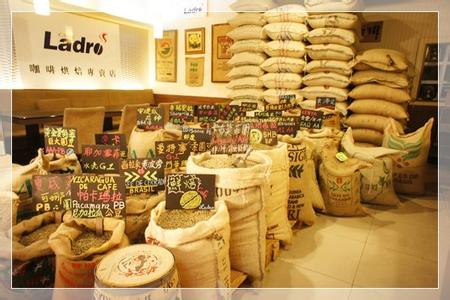Colombia is the best place to grow coffee beans.
The Republic of Colombia is located in the northwest of South America. It is bordered by Venezuela in the northeast, Brazil in the southeast, Peru and Ecuador in the south, Panama in the northwest, the Pacific Ocean in the west, the Caribbean Sea in the north and the ocean in the east. It is the only two-ocean country in South America. Colombia is not only a gateway between South and North America, but also can connect Europe and Pacific Rim countries by sea, so its strategic position is very important.

With a territory of 1.14 million square kilometers, Colombia is second only to Brazil, Argentina, Mexico and Peru in Latin America.
The western part of Colombia is a coastal plain and the central part is a plateau composed of the Andes. The Andes are divided into three north-south parallel mountains in Colombia, with broad mountain valleys between them, and alluvial plains formed by tributaries of the Amazon and Orinoco rivers in the east.
Administrative divisions: the country is divided into 32 provinces (departamento) and the capital district of Bogota
Coffee was first introduced to Colombia in 1808 when it was brought by a priest from the French Antilles via Venezuela. Today, the country is the second largest producer after Brazil, with an annual output of 13 million bags of 60 kg each, while Brazil produces 22 million bags a year. The status of coffee in Colombia is illustrated by the fact that all vehicles entering the country must be sprayed and sterilized so as not to inadvertently cause disease and damage coffee trees.
Colombian coffee is one of the few original coffee sold in the world under the name of the country. In terms of quality, it has won praise unmatched by other coffee. The country is the world's largest exporter of Arabica coffee beans, while Robbins coffee is rarely grown. It is also the world's largest exporter of washed coffee beans (Washed beans). Compared with other producing countries, Colombia is more concerned with developing products and promoting production. It is this, coupled with its superior geographical and climatic conditions, that makes Colombian coffee excellent in quality and delicious and famous all over the world.
The country's coffee-producing areas are located in the foothills of the Andes, where the climate is mild and the air is humid. Colombia has three Cordilleras mountains (sub-mountain system) running north and south, right into the Andes. Coffee is grown along the highlands of these mountains. The mountain steps provide a diverse climate, which means that the whole year is the harvest season, with different kinds of coffee ripening at different times. And fortunately, unlike Brazil, Colombia doesn't have to worry about frost. There are about 2.7 billion coffee trees in Colombia, 66 per cent of which are planted in modern plantations and the rest on small, traditionally run farms.
Juan Valdez, the best-known coffee grower in the world, is a fictional advertising figure and a fictional spokesman for the Colombian National Federation of Coffee growers (National Federation of Coffee Growers of Colombia).
Colombia, which produced about 600kg of coffee per hectare in the early 1960s, has now grown to about 900kg, with individual farms reaching 2500 kg. However, quality assurance is a top priority for the coffee industry. Colombia established the National Coffee Management Association (Federacion Nacional de Cafeteros, or FNC) in 1927, which is responsible for quality supervision. Although the association is a private company, it acts on behalf of the government. In addition to organizing the industry, the association is also responsible for raising funds in a bumper harvest year. The price of coffee has tended to fall over the past few years, and the association has almost exhausted its reserves. The National Coffee Management Association is also responsible for health care, education, road construction, hiring planting technicians, conducting investigations, monitoring product quality, directly handling 50 per cent of total exports, and employing marketing personnel. Like Kenya's National Coffee Management Association, it is a model of coffee organization.
Colombian coffee farmers can sell all their products to the Coffee Management Association at an official low price, or to exporters, who may offer a higher price or no bid at all. In fact, the Coffee Management Association (FNC) controls exports to Europe, while coffee to the United States is mainly exported through private exporters. However, all exports are subject to the lowest export price.
Colombia is fortunate to have Atlantic and Pacific ports, which helps to reduce the cost of transporting coffee, which is the only country in South America. The main production areas of Colombia are in the central and eastern mountains. The most important plantations along the central mountains are located in Medellin, Armenia and Manizales, where coffee is of the best quality and high price, characterized by full grains, rich nutrients, rich aromas and moderate acidity. Taken together, the three regions are referred to as MAM (the initials of the major cities in the three regions). Most of Colombia's top coffee for export comes from MAM. Along the eastern mountains, the two best areas are around Bogota and then north around Bucaramanga. Bogota coffee is less acidic than Medellin coffee, but the two are of the same quality.
German imports account for 25 per cent of Colombia's total exports, reflecting the excellent quality of the country's coffee. Coffee grades are divided into Supremo, Excelso and UGQ,Unusual Good Quality. Klauss coffee in the excellent grade is exported to Germany and Europa coffee is exported to Nordic countries. Excellent grade coffee and top coffee can be bought in most coffee shops. The difference between the two professional regulations is that the coffee beans used in top coffee are larger, and the raw materials are taken from newly harvested coffee beans, which makes it easier to ensure the quality of the products. Excellent coffee is usually softer and slightly more acidic than top coffee, but both are aromatic coffee with moderate granules and excellent fruit. Colombian coffee is often described as having a silky taste. Of all the coffees, it has the best balance. It tastes soft, smooth and ready to drink.
The question facing Colombian coffee growers is whether to replace bourbon coffee with fast-growing and high-yielding Arabica coffee trees. Some people say that the quality will not be as good as it used to be, but others say that in the place where coffee is most suitable for growth, there will not be much difference in quality.
Flavor: nutritious, highly balanced, sometimes nutty
Suggested baking method: moderate to deep baking, suitable for various uses
Evaluation: excellent
Brief introduction of Fine Colombian Coffee
Santa Isabella, Colombia (16 eyes) Colombia 16sc
Santa Isabella our best Colombia
Colombian MAM coffee is usually lightly roasted with acid that can be described as "violent", but high-altitude selected manor coffee has an elegant and rich sour texture, delicate and round, the larger part of Columbia Santa Isabella's Colombian beans are small and windy.
But the taste is more mature and outstanding.
St. Augustine Colombia San Agustin, Colombia
Coffee grown at high altitude and grown at 100% Typica, dried in natural sunlight instead of electric dryers, tastes clean and mellow, elegant, soft and balanced.
Important Notice :
前街咖啡 FrontStreet Coffee has moved to new addredd:
FrontStreet Coffee Address: 315,Donghua East Road,GuangZhou
Tel:020 38364473
- Prev

What's the difference between Arabica coffee and Roberta coffee?
Arabica coffee (transferred from www.molinarichina.com) Arabica coffee (Coffee.Arabica): Arabica coffee, also known as Arabica coffee, its taxonomic position was determined by Linnaeus in 1753. It can produce Arabica coffee (C.Arabica) beans, which can be called high-quality coffee beans in the world and the only coffee that can be drunk without any ingredients. Allah
- Next

Roasting knowledge of coffee beans characteristics of coffee beans at different roasting stages
Light the most mild baking, no fragrance and concentration can be said to test light for the general popular baking degree, leaving a strong sour taste. The cinnamon color of beans is favored by people in the western United States. Medial is moderately baked. Mellow, sour and delicious are mainly used in blended coffee with moderate High acidity and bitterness. It is suitable for coffee such as Blue Mountain and moving Mazaro for Japanese and Nordic people.
Related
- Beginners will see the "Coffee pull flower" guide!
- What is the difference between ice blog purified milk and ordinary milk coffee?
- Why is the Philippines the largest producer of crops in Liberia?
- For coffee extraction, should the fine powder be retained?
- How does extracted espresso fill pressed powder? How much strength does it take to press the powder?
- How to make jasmine cold extract coffee? Is the jasmine + latte good?
- Will this little toy really make the coffee taste better? How does Lily Drip affect coffee extraction?
- Will the action of slapping the filter cup also affect coffee extraction?
- What's the difference between powder-to-water ratio and powder-to-liquid ratio?
- What is the Ethiopian local species? What does it have to do with Heirloom native species?

